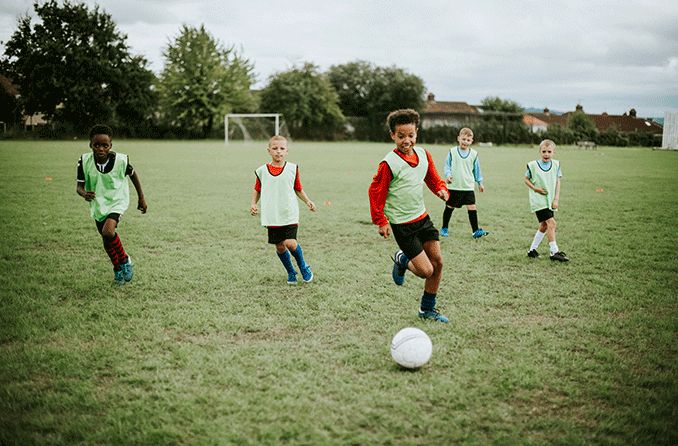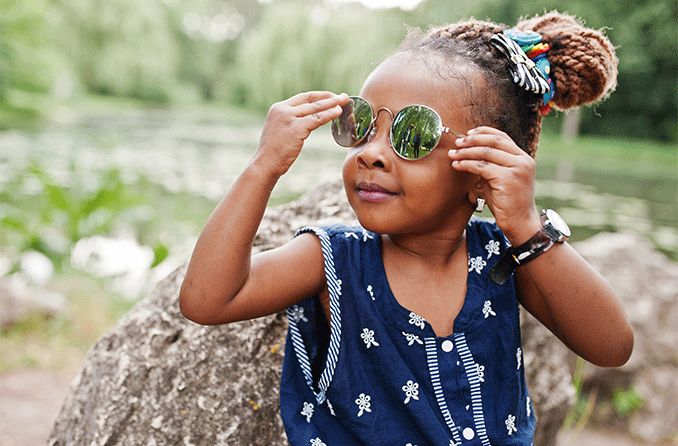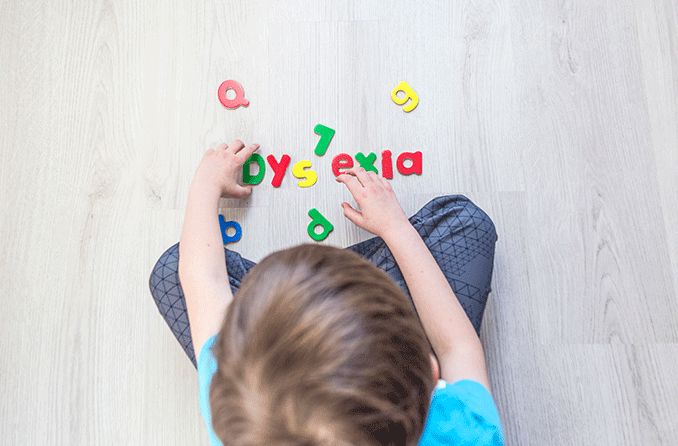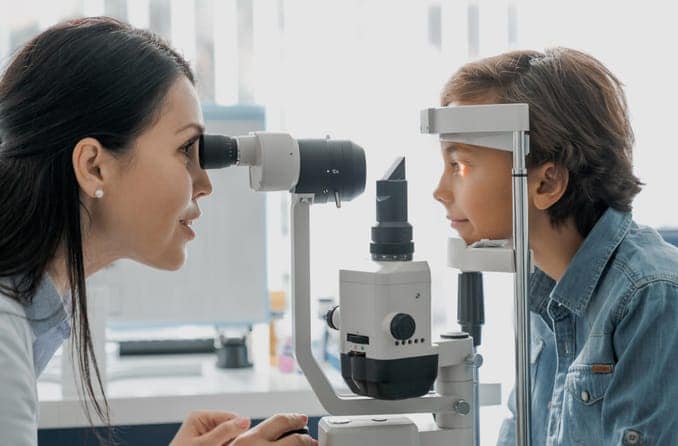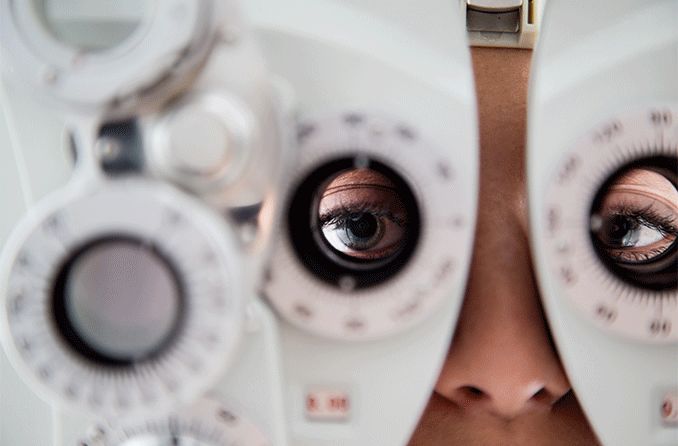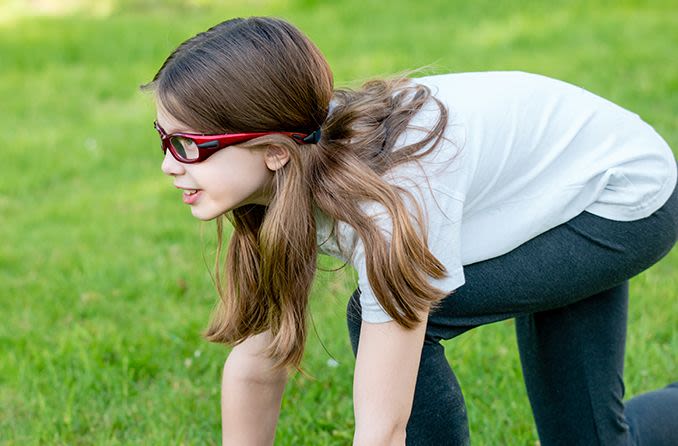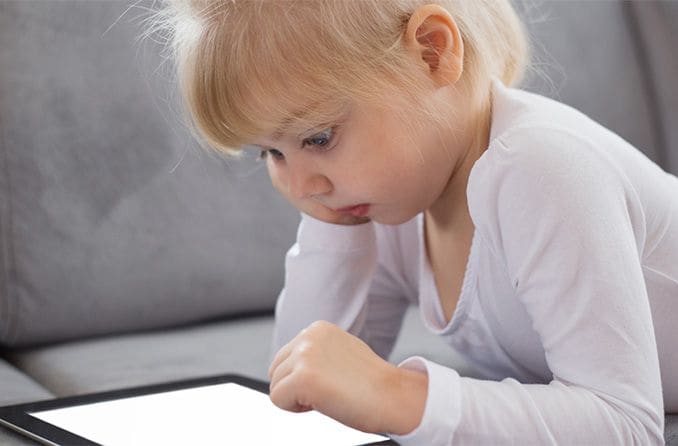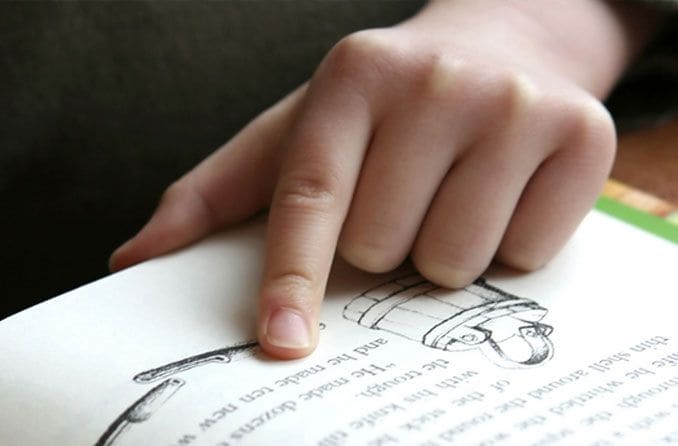The importance of vision in youth sports
It’s no secret that kids need to be able to see clearly to play sports successfully. Myopia (nearsightedness) can make it difficult to see scoreboards, boundary lines and even the ball itself. And if a child has trouble seeing well on the court, they may also struggle to see in the classroom.
Having sharp vision is crucial in both sports and school. If your child experiences blurry vision or you notice other issues that may be related to their sight, schedule an appointment for them to get a comprehensive eye exam.
Myopia and youth sports
Myopia is a refractive error that makes faraway objects appear blurry. It currently affects about 30% of people around the world, and the International Myopia Institute estimates that up to 50% of the global population will have myopia by the year 2050.
Nearsightedness can cause issues for your child if they play sports, as it can blur the boundary lines of the field or court. Goals, baskets and bases may seem farther away than they actually are, making it hard to pinpoint how and where to aim a ball (or their own running trajectory). And the list of obstacles goes on.
When a child can’t see everything clearly during a game, their athletic skills may be compromised. If they can’t play to the best of their ability, errors and injuries could follow.
Getting your child’s vision checked on a yearly basis and making sure that they can see clearly on the field is the best way to avoid these incidents. They may need prescription glasses or contact lenses in order to achieve their goals.
SEE RELATED: Is playing sports safe for kids with myopia?
Keeping their eyes on the ball
Vision clarity problems like myopia are not the only thing that can interfere with your child’s athletic abilities.
Seeing clearly in sports involves several aspects of vision, including:
- Peripheral vision. Also called side vision, this helps you run and move around other players without bumping into them. It also helps kids sense if something is flying toward them from an unexpected direction.
- Depth perception. This Is needed to see how far away the ball, goal and other players are, and where they are in relation to other people and objects.
- Hand-eye coordination. Crucial for nearly all sports, like basketball that requires dribbling and tennis that requires hitting a ball with a racket.
- Eye tracking ability. Kids need to be able to focus their vision on and follow the movement of a specific object, especially if it could be a ball or puck traveling at speed toward their head.
These key components of vision (along with visual acuity in general) are vital when it comes to playtime. Not only do they help a child keep their head in the game — they also protect them from colliding with other athletes or sporting equipment.
Signs your athlete’s vision may be compromised
If your child’s vision is not up to par, you may notice it in the way that they play or how they describe their time on the field. Some signs to look out for include:
- Squinting
- Rubbing their eyes
- Trouble following the lines of the field or court
- Struggling to pass the ball if they don’t see a teammate nearby
- Complaints of headaches or blurry vision
These symptoms may indicate that your child has myopia or another vision condition that requires corrective eyeglasses or contact lenses. If they do have myopia, your doctor may recommend contact lenses that can help prevent myopia from getting worse.
Keep in mind that vision continuously develops throughout childhood, and you won’t know if there is a problem until you visit an eye doctor.
SEE RELATED: Sports vision tests and training
Vision protection in youth sports
In addition to correcting and managing your child’s existing vision problems, it’s also important to prevent complications such as eye injuries.
Over 600,000 sports-related eye injuries occur every year, according to the Vision Council. A third of those injuries occur in children. Fortunately, there are several options for protective eyewear that can help prevent and limit the severity of eye injuries.
Of the many popular sports children play, the most eye injuries occur in games of basketball, baseball, ice hockey and racket sports.
Protective eyewear such as sports glasses and goggles can often be made with prescription lenses but they do not require a prescription. Whether your child needs corrective lenses or not, consider getting their eyes some protection for any potentially dangerous contact sports that they participate in.
Sometimes, your child may need more than just protective eyewear. Sports such as football, hockey, baseball and biking should also include head protection, such as a mask and/or a helmet to prevent head trauma or concussion.
SEE RELATED: Features to consider when purchasing sports glasses for kids
Driving the message home
Sports are a great way for children to bond with their friends and teammates, and to truly embrace a playful childhood. Correcting vision problems and preventing eye injuries are some of the most important things you can do to make sure they have fun and can perform at their best through it all.
Help keep your child’s eyes healthy and their vision prescription current with annual eye exams. Make sure they also understand the importance of their vision when playing sports. And finally, make sure they can clearly see you cheering them on from the sidelines.
